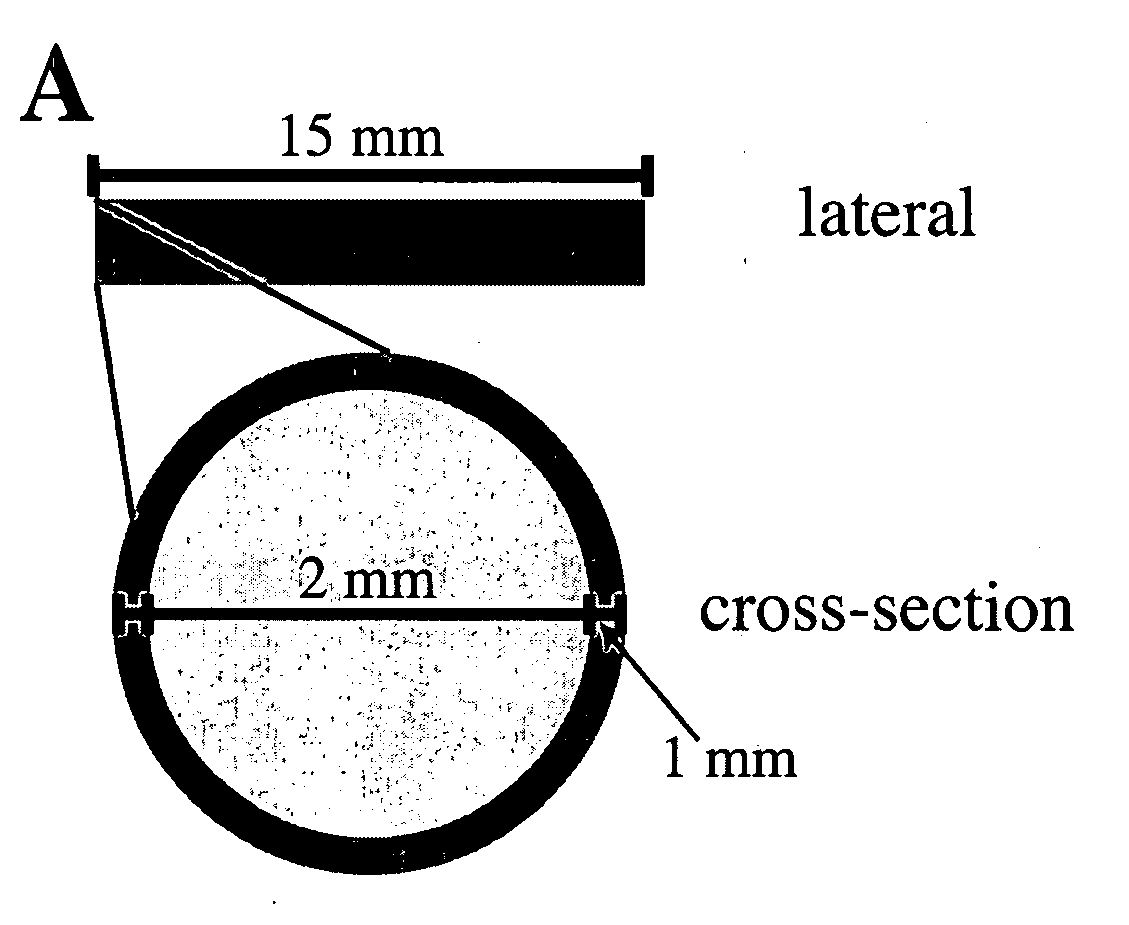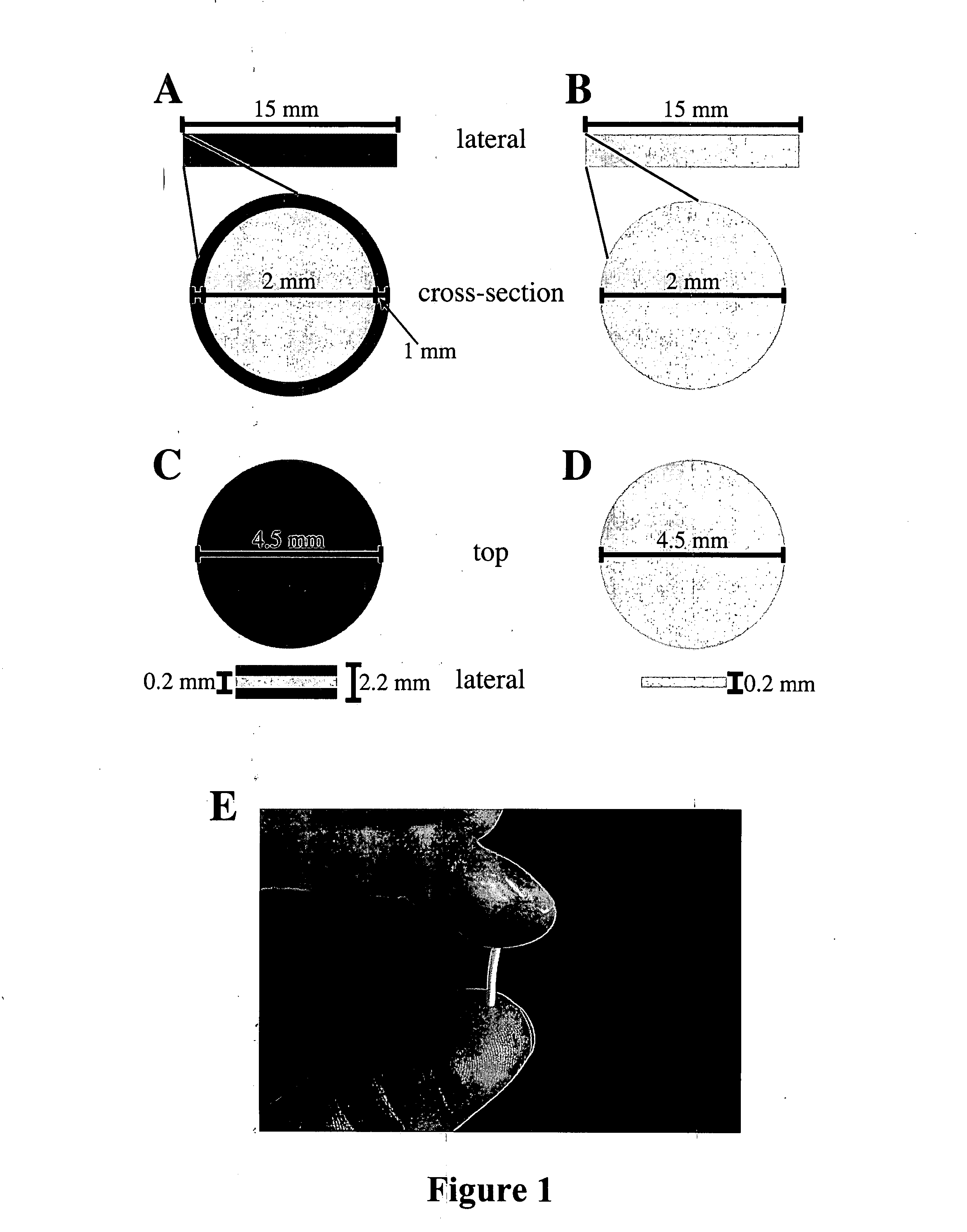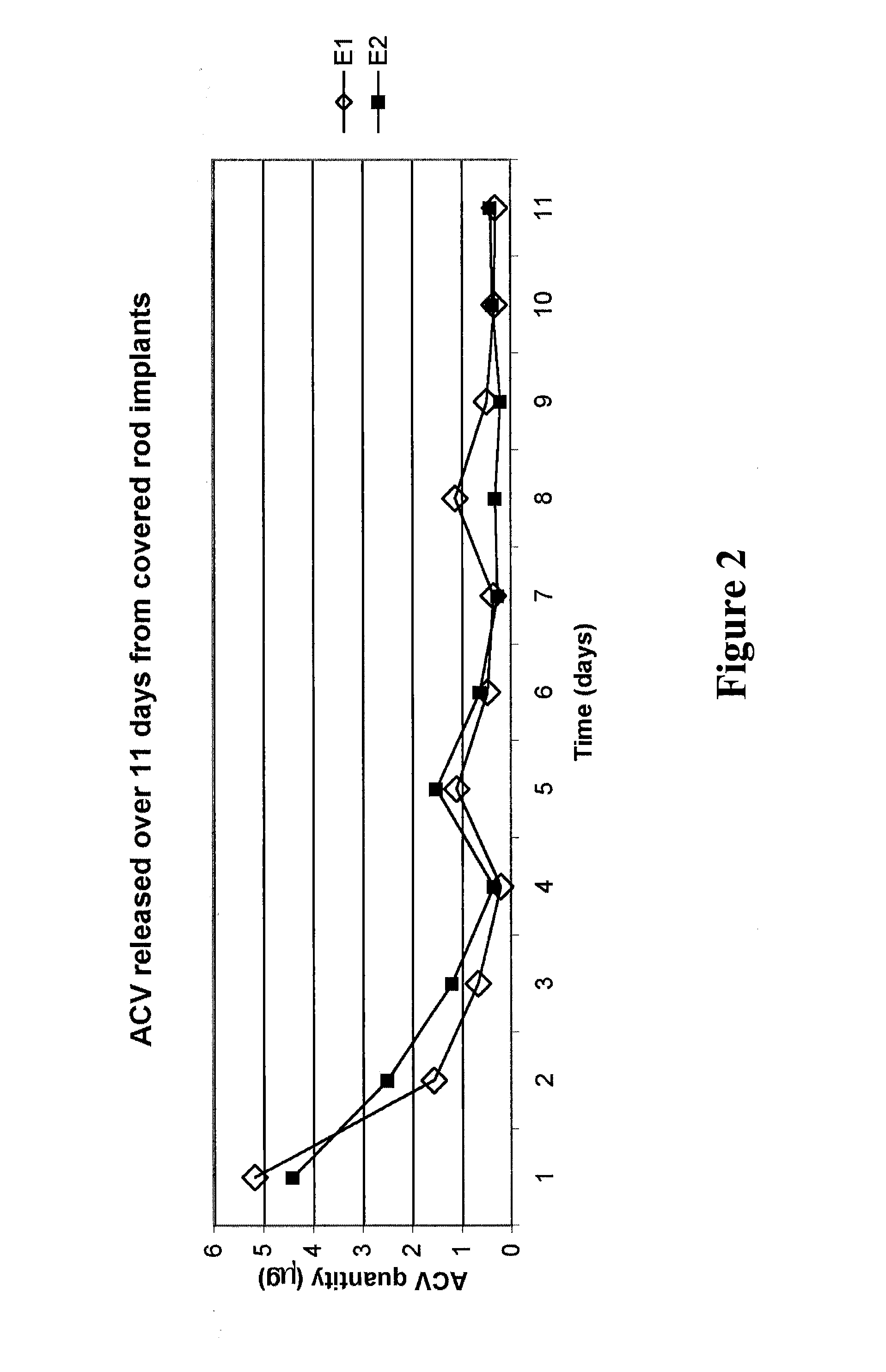Novel therapy for herpesvirus infection
a technology for herpes simplex virus and treatment methods, applied in the field of human herpes simplex virus treatment methods, can solve the problems of high patient compliance, potential problems, premature termination of viral replication,
- Summary
- Abstract
- Description
- Claims
- Application Information
AI Technical Summary
Benefits of technology
Problems solved by technology
Method used
Image
Examples
examples
[0073] Exemplary, non-limiting examples and embodiments of the invention will now be described with reference to the figures.
[0074] The implantable drug delivery devices of the present invention were evaluated for release kinetics of ACV in response to i) varying amounts of exposed surface area, ii) differing temperature, iii) differing pH levels of the release media into which the implants were placed, and iv) and in vivo testing. Additionally, it was found that these ACV-silicone devices are capable of protecting Vero cells from HSV-1-induced cytopathic effect (CPE) in culture.
[0075] Materials and Methods
[0076] Implant Development
[0077] Implants were composed of a matrix of silicone and powdered acyclovir (ACV) (Sigma-Aldrich, St. Louis, Mo.), combined and molded into four different structures, some of which were covered with drug-free silicone. The four implant types developed were a silicone-covered rod, an uncovered rod, a silicone-covered disk, and an uncovered disk (FIG. ...
PUM
| Property | Measurement | Unit |
|---|---|---|
| length | aaaaa | aaaaa |
| diameter | aaaaa | aaaaa |
| diameter | aaaaa | aaaaa |
Abstract
Description
Claims
Application Information
 Login to View More
Login to View More - R&D
- Intellectual Property
- Life Sciences
- Materials
- Tech Scout
- Unparalleled Data Quality
- Higher Quality Content
- 60% Fewer Hallucinations
Browse by: Latest US Patents, China's latest patents, Technical Efficacy Thesaurus, Application Domain, Technology Topic, Popular Technical Reports.
© 2025 PatSnap. All rights reserved.Legal|Privacy policy|Modern Slavery Act Transparency Statement|Sitemap|About US| Contact US: help@patsnap.com



